
The cloaked pug is a moth of the family Geometridae. The species was first described by Johann August Ephraim Goeze in 1781 and it can be found in Europe and to the east in Siberia and Japan.

Eupithecia linariata, the toadflax pug, is a moth of the family Geometridae. The species can be found in Europe and from Anatolia to Tajikistan and Iran.

Eupithecia insigniata, the pinion-spotted pug, is a moth of the family Geometridae. The species can be found in Europe and Turkey.

Eupithecia conterminata is a moth of the family Geometridae. The species can be found from Fennoscandia and the mountains of central Europe, through the Caucasus to southern Siberia.

Eupithecia denotata is a moth in the family Geometridae. The species can be found across the Palearctic from western Europe to Central Asia and China.
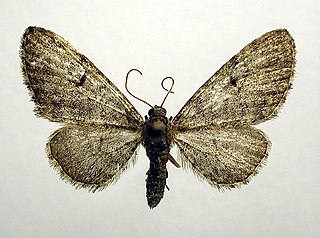
Eupithecia egenaria, the pauper pug, is a moth of the family Geometridae. It is known from almost all of Europe, except Portugal, Ireland and the southern part of the Balkan Peninsula.
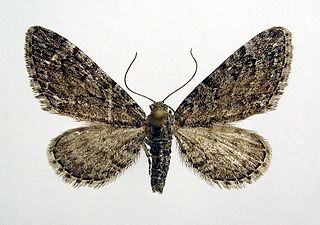
Eupithecia gelidata is a moth of the family Geometridae. It is known from northern North America, Greenland, northern Russia, Scandinavia and northern central Europe.
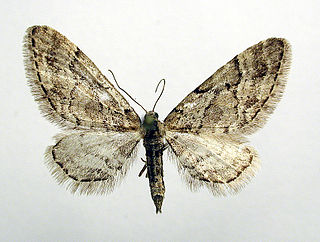
Eupithecia lanceata is a moth of the family Geometridae. It is known from most of the Palearctic realm, except for the south. The habitat consists of pine forests.
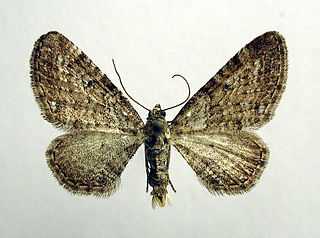
Eupithecia pernotata, or Guenée's pug, is a moth of the family Geometridae. The species was first described by Achille Guenée in 1857. It is known from the Alps, through Romania to southern Russia. It is also found in Finland.

Eupithecia selinata is a moth of the family Geometridae. It is found from Japan through the Amur Region, Siberia, the Urals, Caucasus and Russia to western Europe and from southern Fennoscandia to the Alps.

Eupithecia cauchiata is a moth of the family Geometridae. It is found from the Pyrenees to the Ural. In the north, the range extends to the southern coast of Finland.
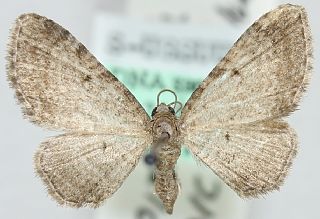
Eupithecia addictata is a moth in the family Geometridae. It is found from north-eastern Italy, through Austria, northern Hungary and southern Slovakia to Ukraine, Russia and Japan. It is also found in the southern Balkan Peninsula.
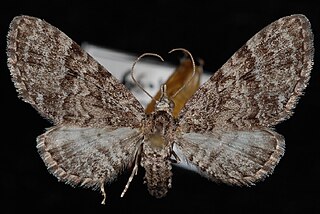
Eupithecia ornata is a moth in the family Geometridae. It is found from British Columbia and Alberta, south to California, Arizona and Nevada.

Eupithecia ericeata is a moth in the family Geometridae first described by Jules Pierre Rambur in 1833. It is found in most of southern Europe and the Near East.
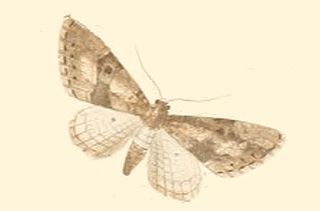
Eupithecia gueneata is a moth in the family Geometridae. It is found in most of southern and eastern Europe, as well as the Near East and North Africa.
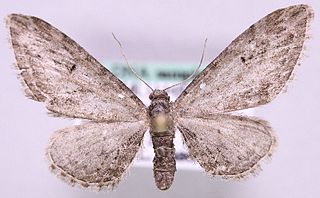
Eupithecia ochridata is a moth in the family Geometridae. It is found in most of Europe, except Ireland, Great Britain, the Benelux, France, Portugal, Austria, Croatia, and northern Russia. It is also present in the eastern Palearctic realm and the Near East.
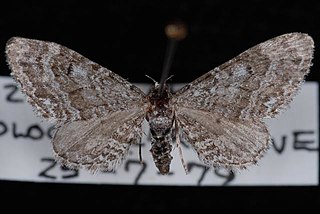
Eupithecia perfusca is a moth in the family Geometridae first described by George Duryea Hulst in 1898. It is found in western North America.
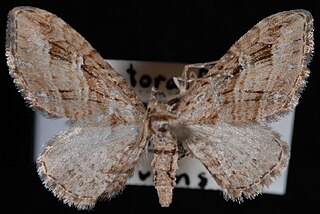
Eupithecia niphadophilata is a moth in the family Geometridae first described by Harrison Gray Dyar Jr. in 1904. It is found in North America from British Columbia and western Alberta south to New Mexico.

Eupithecia longipalpata is a moth in the family Geometridae. It is found from coastal British Columbia south to California.
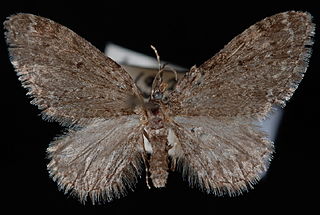
Eupithecia annulata, the larch pug moth, is a moth in the family Geometridae. The species was first described by George Duryea Hulst in 1896. It is found in North America from British Columbia north to the Yukon, east to Newfoundland and Labrador and south to California and Colorado.




















